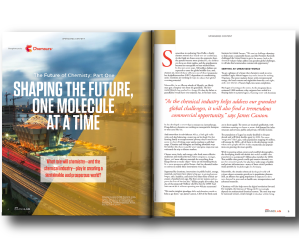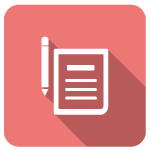Your organization has developed a new, top-of-the-line product. You’ve mapped out an engaging creative concept and a killer tactical plan. To capitalize on all that preparation, you’ll need to inform and persuade your audience with great copywriting at every step of your marketing campaign. How do you develop perfect copy for every deliverable along the way? Copywriting for a scientific audience in the B2B space comes with many unique challenges—but it’s still copywriting. No matter who you’re trying to reach, it’s important to use its core tenets. We outline them for you here.
Writing to Scientists
As it is with any copywriting, knowing and understanding your audience and their journey is critical. In science copywriting, this often means your audience is in academia. Including mid-career researchers and administrators – not just graduate students or lab managers.
Despite the logical, methodical nature of these end users, it’s important to remember that they are, above all, people. And people use emotion to make decisions. It can be easy to lose sight of this in a technical field like science communications (and in B2B marketing, in general, compared to B2C). But scientists have emotions, aspirations, and frustrations like the rest of us. This makes it important to highlight the real-life implications products will have on their workflow—especially because so many products in the sciences are highly feature-oriented.
Think of it like this: Will your product’s features allow a scientist to spend less time waiting for a sample and go home earlier? Will a feature allow more accurate results, which could help a researcher publish a paper worthy of top journals to kick-start their career? End benefits are also important to keep in mind: helping patients is always more exciting than getting samples processed more quickly. (Just be sure not to oversell!)
It’s also important to build trust. Your audience has been trained to be skeptical, and your best line of defense against skepticism is being completely straightforward and accurate. Be clear in your language: vague, high-level strings of overused marketing jargon will only make it look like you don’t know the subject matter well enough to be specific. For example, “next-generation” is a hot marketing term, however “next-generation sequencing” refers specifically to a technology that emerged in the mid to late 1990s.
Use the language your audience uses. Words often mean different things in different fields, and syntax is important. For example, in botany, “calyx” means the leaves on the underside of the flower, but in neuroscience, it refers to a specific structure in the auditory system of the brain. Not only does using precise language show that you know what you’re talking about, but it also lets people recognize their work while reading your copy.
A Clear Call to Action
As with other copywriting, it’s important to make sure your audience knows what to do next with a clear call to action. Just because you’re speaking to a technical audience doesn’t mean they’ll know what to do at this point. You’ve already gotten people to trust you by providing relevant information, so it’s important to not let that effort go to waste. After people read your well-researched and informative copy, they should know exactly what they’re supposed to do next by seeing a carefully placed mechanism that clearly marks how they can carry out that action.
You can accomplish this with a link to a product, signup sheet, or whichever desired task that accomplishes your ad goals. Examples may include “read more,” “watch the video,” “download the white paper,” or “speak with an expert.”
Campaign Specific Tips
Now that you’ve adapted your tenets of copywriting to your audience, how can you make sure that your copy lands perfectly at each level of your campaign? While writing multiple types of media, it’s important to keep the function of each in mind, while remembering that everything you write should stem from the campaign’s main concept. Your audience will encounter different forms of media at different stages of the buyer’s journey, so it’s important to provide the right amount of data and narrative at each step.
 Web Banner and eNewsletter Ads
Web Banner and eNewsletter Ads
A good banner ad should build brand awareness by grabbing the interest of your target audience on the sites they visit. It’s likely that the page is cluttered with other advertisements, so it’s important that your copy is as disruptive as possible to win your audience’s attention. It should also have information that’s relevant to your audience, since you’ll also be competing with the content they came to see. Even if you’re the only ad on a newsletter, you’re still competing with the headlines and links that the subscriber was looking for when they opened the newsletter. Brevity is key here because space is so limited, so keep your messages short and concise, yet meaningful.
 Print Ads
Print Ads
Use the space afforded by print ads to your advantage and tell great stories about your product or service. With the right mix of words and visuals, print ads are an effective method to communicate with your targeted audience. Beyond creating awareness of your company’s name and logo, you can write copy that focuses on the specifics of how your product can solve the reader’s problem. The aim here is to get the audience interested so you can move them to the next component of your campaign.
 Brochures
Brochures
Brochures give readers specific information about your product and help them make their purchasing decision. For these bottom-of-funnel, purchase-focused projects, it’s important that your copy highlights the specific technical capabilities of the product. Like any copy-based project, your brochure should tell a story, but at this stage in the buyer’s journey, that story should be a technical, data-heavy one that supports why your product is better than the competition’s. Specifically, the data should be driven by how the product or service is a means to advancing the current limits in scientific understanding or improving the standards of current research workflow.
 Emails
Emails
A good email should be short but include linked teasers to pull people to a landing page or microsite. Your message should include concise, yet compelling language that keeps readers’ attention and encourages them to follow a link to your website or another relevant site. If you are sending an email through a third-party list, it’s important that you use language consistent with your brand so that people can recognize your organization even though it is coming from another outlet.
Lastly, do not underestimate the importance of the subject line – you need the reader to open the email to read it. Don’t try to be too brainy, as it can come off as insincere, and definitely do not attempt to be deceptive with someone seeking to acquire knowledge. Instead, try teasing a scientific information gap or point out a technical limitation in current research.
Landing Page or Microsite
Typically, the purpose of your landing page or microsite will be to encourage your audience to provide their contact information or move further into your website. The copy here should be clear for your customers to see why they should trust you with their information. Start off with a short, eye-catching headline to hook the audience, and follow this with a convincing and lengthier sub-header to reel them in.
Once you have the audience’s attention, get straight to the point and explicitly explain the value of your product or service, but do not exaggerate. By the same token, explain what the audience would be losing out on by not proceeding further. As with any audience, using a third-party key opinion leader is a tried and true method for gaining a science audience’s trust. Given the intended brevity of landing pages, be sure to provide multiple forms of contact (i.e. phone, email, and physical address) as a means for the dialogue to continue.
Persuasive copywriting for a scientific audience shares many elements with copywriting in other industries. Keeping these similarities in mind while adjusting your copy to a scientific audience across different types of media will make the most of your marketing plan.


















